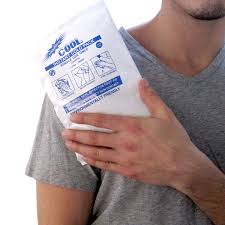Shoulder pain can affect much more than just our comfort. It can limit our ability to pick up our children, carry groceries, or even reach for something on a high shelf. If you’ve been struggling with nagging shoulder pain, there’s a strong possibility it may be due...
A stress fracture is a small crack within a bone. However, unlike acute fractures, which occur from a sudden injury, stress fractures gradually develop over time and are common among athletes, runners, and individuals with physically demanding lifestyles. These tiny,...
Tendons are tough, fibrous tissues that connect muscle to bone and play a critical role in our movement, from helping us swing a tennis racket to allowing us to lift groceries or climb the stairs. But for all their strength and flexibility, tendons are also...
How to Prepare for Non-Operative Sports and Spine Treatment

Not all orthopaedic sports and spine injuries require surgery, and many can be treated with non-operative methods. While these treatments are less invasive than surgical procedures and require less preparation, it’s still important to be informed so you know what to expect. Most are performed in an outpatient setting, so recovery time and pain is minimal.
Patients who suffer from injuries such as sprains, pulled muscles and overuse injuries can really benefit from non-operative methods. In addition, people who have been experiencing pain as a result of workplace injuries, sports injuries, auto accidents, lower back or neck disorders, and old musculoskeletal injuries can also find relief with these treatments.
Some non-operative treatment methods that are commonly used include physical therapy, injections, osteopathic and chiropractic manipulation, acupuncture, and daily exercise. Physicians typically combine these methods, in addition to medication, to relieve pain and promote healing of the injury.
After you and your physician have decided on the appropriate treatment for your injury, be sure to discuss it with him or her so you can be fully prepared. Keep the following tips in mind when attending your non-operative treatment sessions:
- Avoid wearing jewelry or any type of restrictive clothing during your non-operative treatment appointment. Wear loose-fitting, comfortable clothes that allow you to move around freely.
- Arrange for someone to drive you home if you’re undergoing an interventionalspinal procedure, such as an epidural steroid injection.
- Make sure you stop taking any medications that your physician has instructed you to discontinue during your non-operative treatment, especially blood-thinning medications.
- If you’re receiving injections or acupuncture, the site where the needles were inserted may be sore for the remainder of the day. Be sure to contact your doctor if the pain persists for several days.
- Treatment methods that involve movement of the injured area, such as physical therapy or daily exercise, will probably cause soreness and muscle tightness. This is normal because of the physical activity involved, but taking an over-the-counter pain reliever and applying cold or hot compresses should help.
The number of treatments or sessions that you attend will depend on your injury and the treatment method you’ll be undergoing. For example, if you’re attending physical therapy sessions, you may go two or three times a week for four to six weeks. With injections, often one will be enough, though occasionally it can take more.
It’s important to remember that if these methods do not seem to have much effect after a course of a couple months, your injury may not respond to non-operative treatments. At this point, you may want to consider undergoing surgery. Discuss all of your options with your physician to determine the best course of action.
If you’ve been experiencing pain from an orthopaedic injury or disorder, it’s important to consult a doctor immediately to find relief and prevent it from getting worse. For more information about sports- and spine-related injuries, including treatment options and finding the right physician for you, download our e-book, Understanding Your Options: The Non-Operative Guide for Sports and Spine Injuries. This educational guide will explain all that you need to know about these painful injuries.

